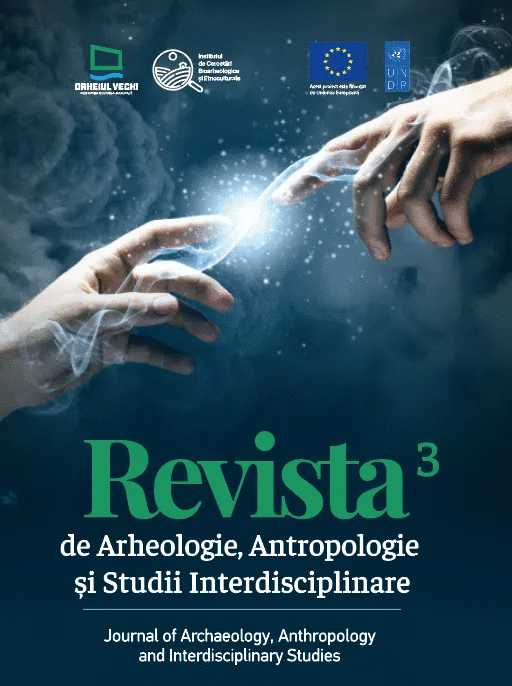Могильник скифской культуры у села Казаклия, Республика Молдова
The Scythian necropolis of Cazaclia, Republic of Moldova
Author(s): Serghei M. AgulnicovSubject(s): History, Archaeology, Ancient World
Published by: Bons Offices – Casa Editorial-Poligrafică
Keywords: Cazaclia;mounds;necropolis;Scythians; Ialpug;
Summary/Abstract: A Scythian necropolis was discovered in 2019, 3.2 km southwest of the Cazaclia village, on a plateau on the left bank of the Ialpug River. It is located in the central part of the Ialpug and Lunga rivers, 1.35 km from the bank of the Taraclia lake, 2.7 km northwest of the Lunga river and 1.2 km west of Cioprac-Dersen creek. In the first place, the mounds were visually undetected. The Scythian barrow necropolis was discovered using aerial photography data (Geoportal MD). The soil was removed in layers of 5 to 10 cm up to the level of the transition layer between chernozem and yellow clay, where the structures of the tombs were fixed. All the main tombs of the mounds were looted in Antiquity. Most Scythian tombs were found in catacombs of type II. And only in barrow 6 two tombs were done in simple rectangular pits. Chronologically, catacombs of type II spread from the second quarter of the 4th century BC in the Lower Danube region. The circular ditches characteristic for the mounds of the Lower Danube were interrupted in the western and eastern parts, where amphorae fragments were concentrated. The amphorae found in ditches belong mainly to the biconical type III of Heraclea Pontica. The knives found in the tombs of the mounds 3 and 5 belong to the type I (according to A. Melyukova), have a bone handle and a curved blade and date back to the 4th and 3rd centuries BC. Weapons are represented by arrowheads with three edges. In the mounds of the Cazaclia, the arrowheads belong to the 3rd chronological group, types A-B, and date back to the 4th-3rd centuries BC. The presence of protective armour is confirmed by a rectangular iron plate of in tomb 1, barrow 5. Such armours are associated with the graves of heavily armed warriors. A glass bead was found in tomb 1, barrow 2, a small number of such items is noted for the mounds of the Lower Danube. The ornaments discovered in the Scythian tombs of Cazaclia are represented by a bronze lyrashaped earring with curved and cone-shaped ends, as well as curved-shaped fibulae from the mound 5. A similar type of jewellery comes from the territory of the Balkan Peninsula and appears in 5th century BC in Thrace. This type of ornament became common in the 4th and 3rd centuries BC in the Scythian burials of the Lower Dniester and Lower Danube regions. Generally, the tombs of Scythians near the Cazaclia village date back to the second half – the late 4th century BC
Journal: Revista de Arheologie, Antropologie și Studii Interdisciplinare
- Issue Year: 3/2021
- Issue No: 1
- Page Range: 243-272
- Page Count: 30
- Language: Russian

